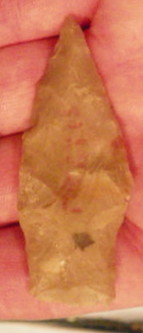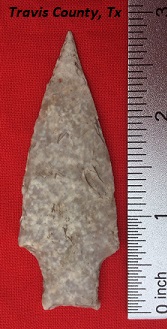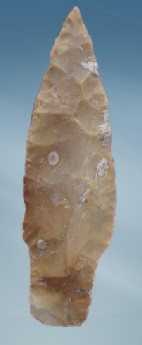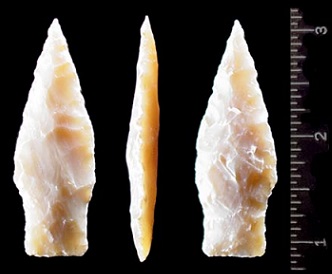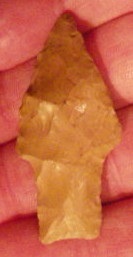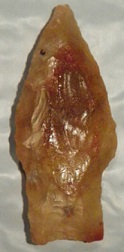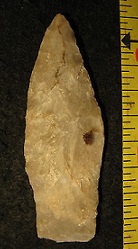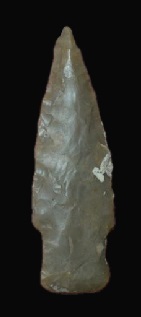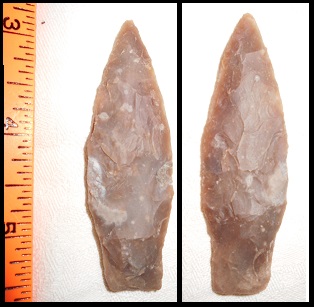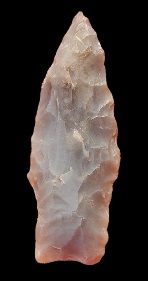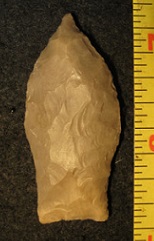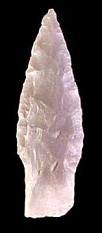Outline is Representative of Size and Shape:

Name Details:
Identified By: Dee Ann Suhm, Alex D. Krieger, Edward B. Jelks
Named For:
Date Identified: 1954
Type Site:
Identified By: Dee Ann Suhm, Alex D. Krieger, Edward B. Jelks
Named For:
Date Identified: 1954
Type Site:
Point Validity:
Valid type
Suhm was an eminent Texas anthropologist who, among many distinguished positions, served as Director of Texas Archeologist Research Laboratory. Krieger was a renowned anthropologist who spent most of his career in Texas cataloging projectile points and pottery in Texas before moving on to the University of Washington. Jelks was a distinguished anthropologist and helped organize the newly formed Department of Anthropology at Illinois State University where he was a Professor. His work in Texas furthered the understanding of Texas archeology and was a founding force for the Society of Historical Archeology. This type was named in a professional publication and subsequent book and has many professional references. This is a valid type.
Suhm was an eminent Texas anthropologist who, among many distinguished positions, served as Director of Texas Archeologist Research Laboratory. Krieger was a renowned anthropologist who spent most of his career in Texas cataloging projectile points and pottery in Texas before moving on to the University of Washington. Jelks was a distinguished anthropologist and helped organize the newly formed Department of Anthropology at Illinois State University where he was a Professor. His work in Texas furthered the understanding of Texas archeology and was a founding force for the Society of Historical Archeology. This type was named in a professional publication and subsequent book and has many professional references. This is a valid type.
Travis Stemmed
AKA: Straw Stemmed (Kelley, 1947) / Buda (Weir, 1979)
Cluster:
Description of Physical Characteristics and Flaking Pattern:
This is a medium lanceolate stemmed point with an elliptical cross section. The blade is narrow and long and is commonly excurvate with the blade curving back in towards the shoulders. Many examples have a straight blade. The shoulders range from weak to prominent and are at an upward angle and rounded. The stem is long and ranges from straight to slightly expanding. Basal and hafting region grinding and smoothing is absent on this type. The base is straight with rounded basal corners. This point has a random flaking pattern.
Size Measurements:
Total Length - 45 to 90 mm (average 70 mm), Stem Length - 15 to 20 mm (typically 1/5 to 1/3 total length), Width - 20 to 25 mm, Stem Width - 15 to 20 mm
Total Length - 45 to 90 mm (average 70 mm), Stem Length - 15 to 20 mm (typically 1/5 to 1/3 total length), Width - 20 to 25 mm, Stem Width - 15 to 20 mm
Commonly Utilized Material:
Additional Comments:
This point was originally described by J. Charles Kelley (1947) which he called the Straw Stem point. This point was renamed the Travis point by Suhm, Krieger, and Jelks (1954) for examples found in central Texas. F.A. Weir (1979) described a point similar to this point which was called the Buda point. It is felt that this may be a local variant of this point (Hays County, Texas) (W11).
The Travis point is similar to the Darl point, except the Travis point lacks the beveling and stem grinding that is seen on the Darl point. The Travis point differs from the Nolan point in that it lacks beveling on the stem edge. The Travis point is narrower and lacks the prominent shoulders seen on the Lange point (Suhm and Krieger, 1954).
This point was originally described by J. Charles Kelley (1947) which he called the Straw Stem point. This point was renamed the Travis point by Suhm, Krieger, and Jelks (1954) for examples found in central Texas. F.A. Weir (1979) described a point similar to this point which was called the Buda point. It is felt that this may be a local variant of this point (Hays County, Texas) (W11).
The Travis point is similar to the Darl point, except the Travis point lacks the beveling and stem grinding that is seen on the Darl point. The Travis point differs from the Nolan point in that it lacks beveling on the stem edge. The Travis point is narrower and lacks the prominent shoulders seen on the Lange point (Suhm and Krieger, 1954).
Distribution: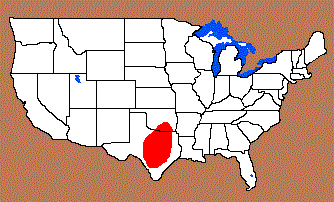
Distribution Comments:
This point is primarily found in central Texas. This point may be found with decreased frequency into the lower Pecos region and into southern Oklahoma.
This point is primarily found in central Texas. This point may be found with decreased frequency into the lower Pecos region and into southern Oklahoma.
Age / Periods:
Date: 4,600 - 4,000 B.P.
Cultural Period: Middle Archaic
Glacial Period: Neoglacial
Culture:
Date: 4,600 - 4,000 B.P.
Cultural Period: Middle Archaic
Glacial Period: Neoglacial
Culture:
Age Details:
Other points in this cluster / Related / Associated Points:

